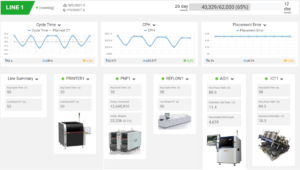Advanced Analytics for SMT: How to Avoid a Field Recall Before It Happens
We previously published an article from the team at Cogiscan explaining How Traceability Reduces the Collateral Damage of a Field Recall. However, the engineers at Cogiscan believe in the power of proactivity over reactivity. With this mindset, they built an SMT Analytics tool that can help PCBA manufacturers avoid a field recall altogether.
Step #1:
An Anomaly in The Failure Rate – Flagging the Problem
During ICT, the lead Test Engineer noticed an anomaly in the failure rate for the product he was testing. Logging into Cogiscan’s Factory Intelligence Analytics application, he confirmed his suspicion and verified that the last time they tested this product, they didn’t experience this failure rate at this reference designator. Upon analyzing closer, he realized all the boards built using reels from this specific lot code were having the same problem – and since these reels were still running in SMT, he flagged SMT to stop populating boards and quarantined the bad lot of reels.
Result: The bad lot of reels were identified and quarantined at the SMT stage. No units were sent out to the field.

Step #2:
Benefits of Avoiding a Recall
Before ever shipping out the door, ProACTIV had the information to flag, monitor, investigate, and assess the problem before bad units were sent out into the field. Thanks to the actionable data available in Factory Intelligence, and the complementary factory visibility of a complete traceability system, ProACTIV completely avoided a recall and saved an enormous amount of both time and money. Additionally, they were the ones to notify their distributor of the problem with the lot number – who then notified all their buyers, including ChkSteps and Deetz MTR.
Result: ProACTIV completely avoided a recall saving an enormous amount of both time and money.

Sound too good to be true?
It’s not. With dramatic improvements to both real-time and historical analytics software, electronics manufacturers can combine the intelligent data coming from multiple systems to improve their manufacturing throughput and performance.










